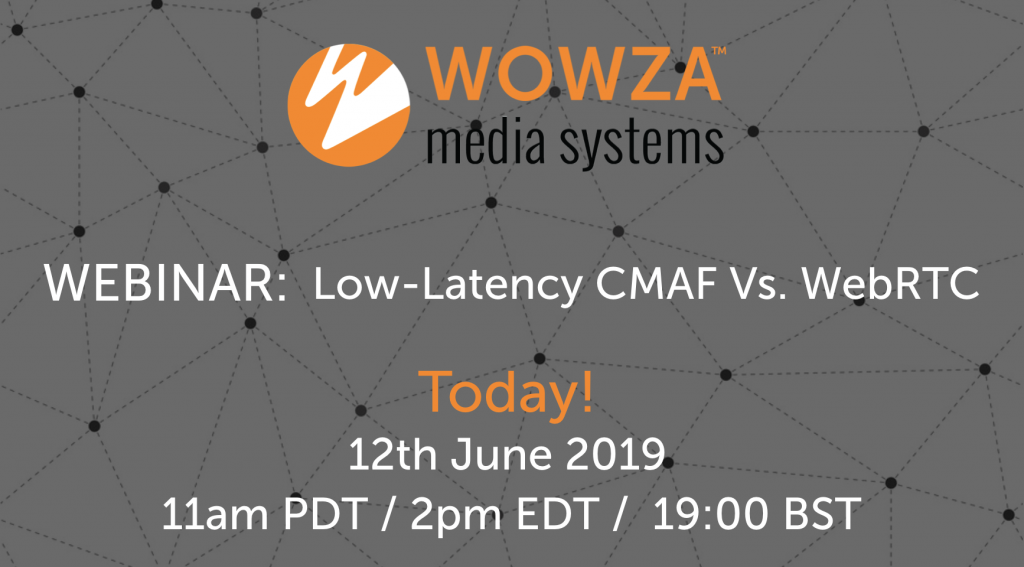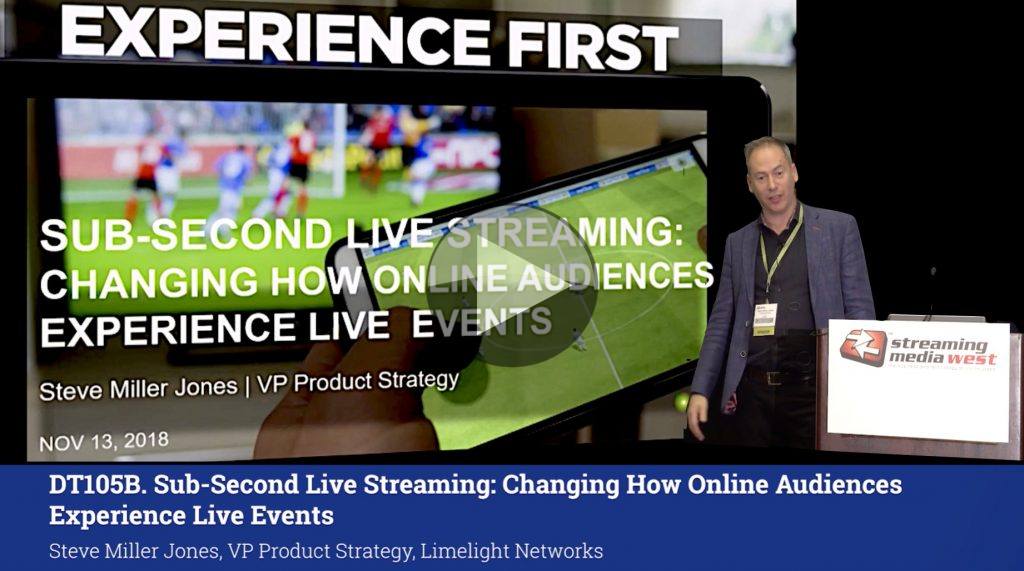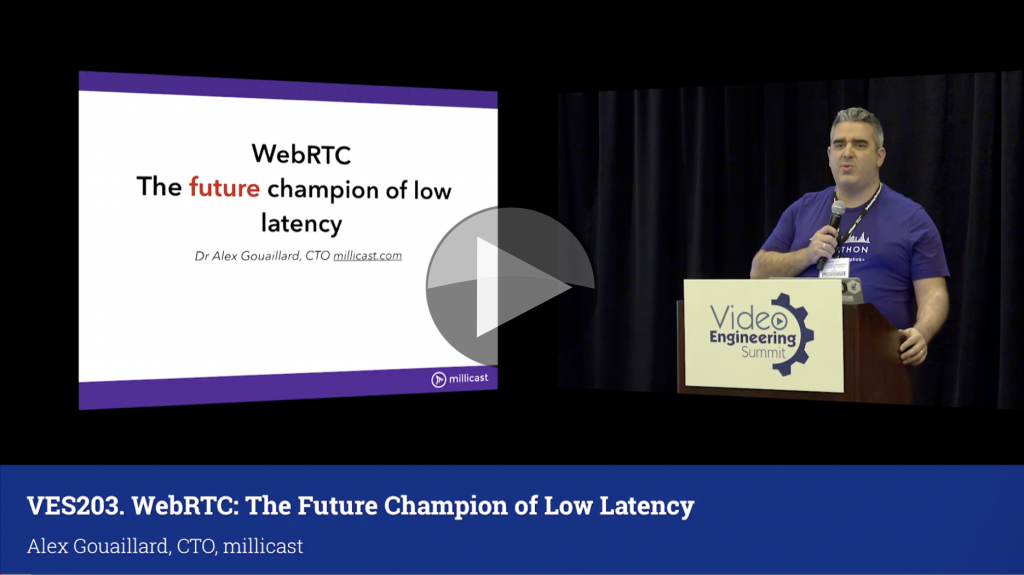CMAF brings low latency streams of less than 4 seconds into the realms of possibility, WebRTC pushes that below a second – but which is the right technology for you?
Date: June 12th 2019 Time: 11am PST / 2pm EST / 19:00 BST
CMAF represents an evolution of the tried and tested technologies HLS and DASH. With massive scalability and built upon the well-worn tenants of HTTP, Netflix and a whole industry was born and is thriving on these still-evolving technologies. The push to reduce latency further and further has resulted in CMAF which can be used to deliver streams with five to ten times lower latencies.
WebRTC is a Google-backed streaming protocol with the traditional meaning of streaming; it pushes a stream to you a opposed to the HLS-style methods of making small files available for download and reassembly into a stream. One benefit of this is extremely low bitrates of 1 second or less. Used widely by Google Hangouts and Facebook messenger, WebRTC is increasingly an option for more broadcast-style streaming services from live sports & music to gaming and gambling.
Both have advantages and draw-backs so Wowza’s Barry Owen and Anne Balistreri are here to help navigate the ins and outs of both technologies plus answer your questions.
Speakers
 |
Barry Owen VP, Professional Services, Wowza |
 |
Anne Balistreri Product Marketing Manager, Wowza |









